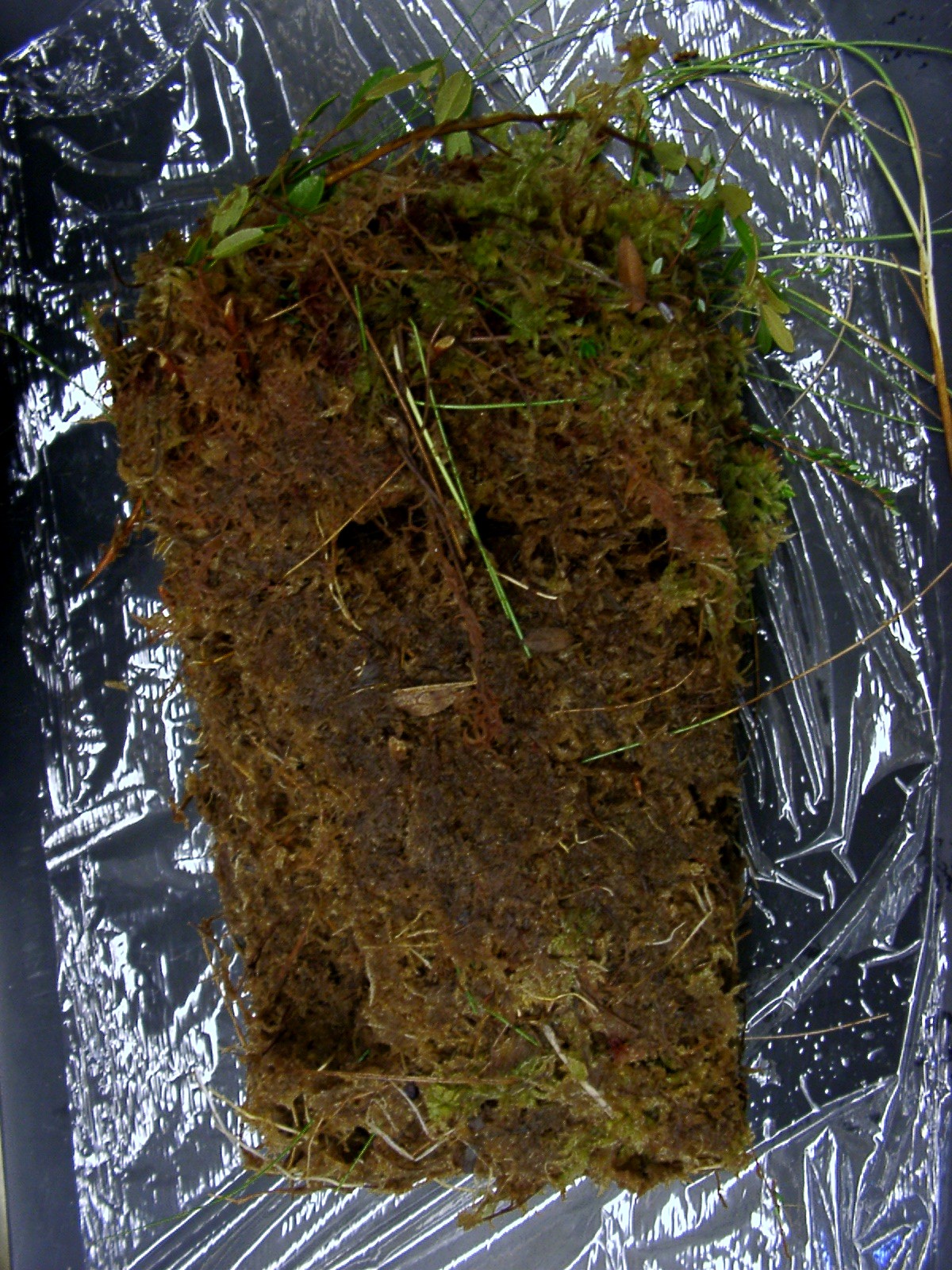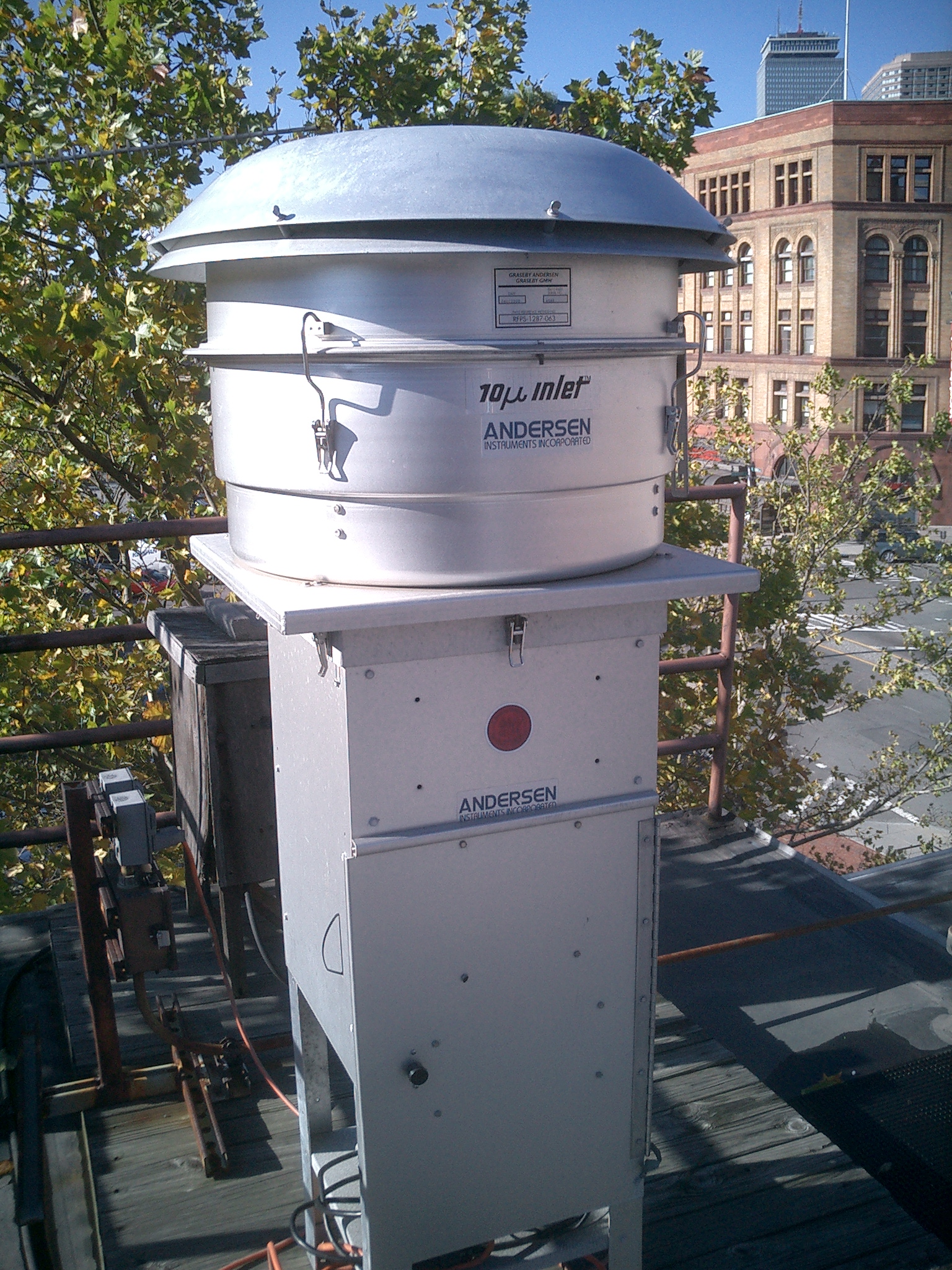Dispersal of anthropogenic PGE
We have been using our expertise in platinum group element (PGE) and rhenium-osmium isotope geochemistry to improve our understanding of the release and dispersal of PGE from catalytic converters and other anthropogenic PGE sources. PGE - specifically Pt, Pd, and Rh - have been used since the mid-1970s in catalytic converters to reduce CO and NOx emissions from combustion engines. Release rates of Pt and Pd have been estimated at about a nanogram per kilometer. In two recent studies, funded by the "Global Alliance For Sustainability", we have investigated the temporal trends in PGE concentrations and 187Os/188Os in an urban lake (Upper Mystic Lake) and an ombrothropic peat bog (Thoreau's bog) in Boston, Massachusetts, USA (Rauch et al., 2004, ES&T 38, 396-402; Rauch et al., 2004, J Environ. Monit. 6, 335-343). Both studies indicate increasing environmental loading of PGE and emphasize the importance of fluvial and atmospheric pathways of PGE dispersal. The isotopic composition of osmium can be used as a fingerprint of anthropogenic PGE, because industrial osmium is derived from unradiogenic (low 187Os/188Os) PGE deposits hosted in mantle-derived ore deposits. The osmium isotope signature of industrial osmium is very different from the isotopic signature of typical upper crustal osmium. We are currently investigating eolian PGE transport in urban areas by studying time series of particle filters from downtown Boston (Rauch et al., 2005, ES&T 39, 9464-9470) and Mexico City (Rauch et al., 2006, ES&T 40, 7554-7560). The data from downtown Boston show average metal concentrations in the range of 1-8 pg per cubic meter air for Pt, Pd, and Rh. Osmium concentrations average 0.07 pg per cubic meter, indicating that Os is present as an impurity in catalytic converters. The 187Os/188Os isotope composition indicates catalytic converter origin in samples with higher Os concentrations. The study also indicates that rain is an effective means of clearing the air of PGE, particularly Os. Due to the low PGE concentrations, particularly the low Os concentrations, these are analytically challenging samples. Our group is also involved in reconstructing atmospheric deposition rates of PGE on regional/glogal scales (Rauch et al.,2005, ES&T 39, 8156-8162) and longer time scales. For instance, an ombrotrophic peat bog in NW Spain records atmospheric deposition over the past 6000 years (Rauch et al., 2007, in prep.) This record clearly shows the unusual enrichment of PGE since the last quarter of the last century. However, we also found intriguing variations in PGE concentration and Os isotopic composition during Roman and medieval periods that apparently show correlations with lead accumulation rates and variations in lead isotopic composition. We do not have sufficient data at this point to be able to unequivocally relate these PGE and Os isotope anomalies to anthropogenic effects during Roman and medieval periods, but are working towards a better geochemical characterization of these older depositional periods.
Most recently, several of us at WHOI (Paul Drevnick, Carl Lamborg, Ann McNichol, Chris Reddy) and the USGS in Woods Hole, Middleton (WI) and Reston (VA) (David Krabbenhoft, Mark Olson, Allan Kolker, Mark Engle, Mike Bothner) were funded by the National Science Foundation (NSF-ATM - GEO/ATM-Paleoclimate Program, project 0830212) to conduct an integrated sampling campaign aimed at the understanding of the atmospheric mercury cycle on Cape Cod (MA). Aerosol collections, both small volume PM2.5 and large volume PM10 and TSP, was part of the campaign. We plan to use these samples to better understand the origin and composition of aerosol sources impacting Cape Cod.
Partners/Collaborators
Dr. Sebastien Rauch (Chalmers University, Sweden) Prof. Harry Hemond (MIT) Dr. Dominik Weiss (Imperial College, UK) Dr. Malin Kylander (Imperial College, UK) Dr. Antonio Martinez (USC, Spain) Prof. Carlo Barbante (Univ. of Venice, Italy) Dr. Urban Wass (Volvo Technology Corp., Sweden) Prof. Masanori Owari (Univ. of Tokyo, Japan) Prof. Gregory Morrison (Chalmers Univ., Sweden) Dr. Kristine Ek (Chalmers Univ., Sweden)

A peat core from Thoreau's bog near Boston. This ombrotrophic bog records eolian deposition in an urban environement. Peat samples were analyzed for platinum group element (PGE) concentrations and osmium isotopic composition. The impact of anthropogenic PGE is clearly visible, indicating eolian transport of these metals from nearby sources. (S. Rauch)

We use an automated particle filter (PM10) in downtown Boston to sample urban air for platinum group element and osmium isotope analyses. This sampler, run for one day, pumps about 1500 cubic meters of air through a Watman 41 filter. (S. Rauch)

The sampling station at Columbus Avenue (10,000 vehicles per day) is near the intersection with Berkeley Street (20,000 vehicles per day). The PM10 sampler was placed on a roof top at a height of about 15 meters. (S. Rauch)